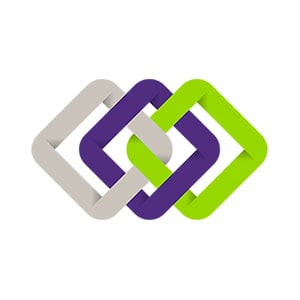-
Financial reporting and accounting advisory services
You trust your external auditor to deliver not only a high-quality, independent audit of your financial statements but to provide a range of support, including assessing material risks, evaluating internal controls and raising awareness around new and amended accounting standards.
-
Accounting Standards for Private Enterprises
Get the clear financial picture you need with the accounting standards team at Doane Grant Thornton LLP. Our experts have extensive experience with private enterprises of all sizes in all industries, an in-depth knowledge of today’s accounting standards, and are directly involved in the standard-setting process.
-
International Financial Reporting Standards
Whether you are already using IFRS or considering a transition to this global framework, Doane Grant Thornton LLP’s accounting standards team is here to help.
-
Accounting Standards for Not-for-Profit Organizations
From small, community organizations to large, national charities, you can count on Doane Grant Thornton LLP’s accounting standards team for in-depth knowledge and trusted advice.
-
Public Sector Accounting Standards
Working for a public-sector organization comes with a unique set of requirements for accounting and financial reporting. Doane Grant Thornton LLP’s accounting standards team has the practical, public-sector experience and in-depth knowledge you need.
-
Tax planning and compliance
Whether you are a private or public organization, your goal is to manage the critical aspects of tax compliance, and achieve the most effective results. At Doane Grant Thornton, we focus on delivering relevant advice, and providing an integrated planning approach to help you fulfill compliance obligations.
-
Research and development and government incentives
Are you developing innovative processes or products, undertaking experimentation or solving technological problems? If so, you may qualify to claim SR&ED tax credits. This Canadian federal government initiative is designed to encourage and support innovation in Canada. Our R&D professionals are a highly-trained, diverse team of practitioners that are engineers, scientists and specialized accountants.
-
Indirect tax
Keeping track of changes and developments in GST/HST, Quebec sales tax and other provincial sales taxes across Canada, can be a full-time job. The consequences for failing to adequately manage your organization’s sales tax obligations can be significant - from assessments, to forgone recoveries and cash flow implications, to customer or reputational risk.
-
US corporate tax
The United States has a very complex and regulated tax environment, that may undergo significant changes. Cross-border tax issues could become even more challenging for Canadian businesses looking for growth and prosperity in the biggest economy in the world.
-
Cross-border personal tax
In an increasingly flexible world, moving across the border may be more viable for Canadians and Americans; however, relocating may also have complex tax implications.
-
International tax
While there is great opportunity for businesses looking to expand globally, organizations are under increasing tax scrutiny. Regardless of your company’s size and level of international involvement—whether you’re working abroad, investing, buying and selling, borrowing or manufacturing—doing business beyond Canada’s borders comes with its fair share of tax risks.
-
Transfer pricing
Transfer pricing is a complex area of corporate taxation that is concerned with the intra-group pricing of goods, services, intangibles, and financial instruments. Transfer pricing has become a critical governance issue for companies, tax authorities and policy makers, and represents a principal risk area for multinationals.
-
Succession & estate planning
Like many private business owners today, you’ve spent your career building and running your business successfully. Now you’re faced with deciding on a successor—a successor who may or may not want your direct involvement and share your vision.
-
Tax Reporting & Advisory
The financial and tax reporting obligations of public markets and global tax authorities take significant resources and investment to manage. This requires calculating global tax provision estimates under US GAAP, IFRS, and other frameworks, and reconciling this reporting with tax compliance obligations.

-
Transactions
Our transactions group takes a client-centric, integrated approach, focused on helping you make and implement the best financial strategies. We offer meaningful, actionable and holistic advice to allow you to create value, manage risks and seize opportunities. It’s what we do best: help great organizations like yours grow and thrive.
-
Restructuring
We bring a wide range of services to both individuals and businesses – including shareholders, executives, directors, lenders, creditors and other advisors who are dealing with a corporation experiencing financial challenges.
-
Forensics
Market-driven expertise in investigation, dispute resolution and digital forensics
-
Cybersecurity
Viruses. Phishing. Malware infections. Malpractice by employees. Espionage. Data ransom and theft. Fraud. Cybercrime is now a leading risk to all businesses.
-
Consulting
Running a business is challenging and you need advice you can rely on at anytime you need it. Our team dives deep into your issues, looking holistically at your organization to understand your people, processes, and systems needs at the root of your pain points. The intersection of these three things is critical to develop the solutions you need today.
-
Creditor updates
Updates for creditors, limited partners, investors and shareholders.

-
Governance, risk and compliance
Effective, risk management—including governance and regulatory compliance—can lead to tangible, long-term business improvements. And be a source of significant competitive advantage.
-
Internal audit
Organizations thrive when they are constantly innovating, improving or creating new services and products and envisioning new markets and growth opportunities.
-
Certification – SOX
The corporate governance landscape is challenging at the best of times for public companies and their subsidiaries in Canada, the United States and around the world.
-
Third party assurance
Naturally, clients and stakeholders want reassurance that there are appropriate controls and safeguards over the data and processes being used to service their business. It’s critical.
-
 Assurance Important changes coming to AgriInvest in 2025AgriInvest is a business risk management program that helps agricultural producers manage small income declines and improve market income.
Assurance Important changes coming to AgriInvest in 2025AgriInvest is a business risk management program that helps agricultural producers manage small income declines and improve market income. -
 ASPE Sec. 3041 Agriculture Understanding and applying the new ASPE Section 3041 AgricultureThe Canadian Accounting Standards Board (AcSB) has released new guidance on recognizing, measuring and disclosing biological assets and the harvested products of bio assets.
ASPE Sec. 3041 Agriculture Understanding and applying the new ASPE Section 3041 AgricultureThe Canadian Accounting Standards Board (AcSB) has released new guidance on recognizing, measuring and disclosing biological assets and the harvested products of bio assets. -
 Tax alert Agricultural Clean Technology ProgramThe Agricultural Clean Technology Program will provide financial assistance to farmers and agri-businesses to help them reduce greenhouse gas (GHG) emissions.
Tax alert Agricultural Clean Technology ProgramThe Agricultural Clean Technology Program will provide financial assistance to farmers and agri-businesses to help them reduce greenhouse gas (GHG) emissions. -
 Tax alert ACT Program – Research and Innovation Stream explainedThe ACT Research and Innovation Stream provides financial support to organizations engaged in pre-market innovation.
Tax alert ACT Program – Research and Innovation Stream explainedThe ACT Research and Innovation Stream provides financial support to organizations engaged in pre-market innovation.
-
Builders And Developers
Every real estate project starts with a vision. We help builders and developers solidify that vision, transform it into reality, and create value.
-
Rental Property Owners And Occupiers
In today’s economic climate, it’s more important than ever to have a strong advisory partner on your side.
-
Real Estate Service Providers
Your company plays a key role in the success of landlords, investors and owners, but who is doing the same for you?

-
Mining
There’s no business quite like mining. It’s volatile, risky and complex – but the potential pay-off is huge. You’re not afraid of a challenge: the key is finding the right balance between risk and reward. Whether you’re a junior prospector, a senior producer, or somewhere in between, we’ll work with you to explore, discover and extract value at every stage of the mining process.
-
Oil & gas
The oil and gas industry is facing many complex challenges, beyond the price of oil. These include environmental issues, access to markets, growing competition from alternative energy sources and international markets, and a rapidly changing regulatory landscape, to name but a few.

Move to e-commerce
The ability to sell to customers online is now critical to your business’ success. If you’re considering launching an online sales platform and unsure where to begin or have some experience and want to achieve greater growth, it’s essential to have a plan that:
- delivers excellent customer service and experience
- includes adequate logistics and infrastructure
- incorporates payment and transactional support
- builds in employee training or new hires with the skills to manage the platform
- utilizes data collection and analysis tools
While the pandemic accelerated the adoption of new sales models, the digital journey isn’t over. Start with a plan that addresses the essentials to get you moving in the right direction – and once you’ve accomplished that, there are additional steps you can take to build on your progress.
Leverage customer data and data analytics
Foster sales growth in two critical ways: identify opportunities to reach new customers and increase engagement with your current customers. Leverage your existing consumer information and any new data generated through online sales platforms to adapt and grow in both directions.
Start by analyzing your existing information and processes and how they can be used to enhance your business. You may be surprised to find you are already collecting much of what you need.
Next, explore the best way to extract more useful insights from that data. For example, use information on buying habits to improve customer experience, develop future promotions, or design new products and services. Combining customer data with information gained through supply chain management, marketing and other business operations can be used to find efficiencies and grow your business by reaching new customers.
There are powerful data collection and analysis tools available that will enable you to do these things, and once you understand what information you already have on hand – and what you want to gather – you can assess which of these tools will help you reach your goals.
Improve your business processes
Ineffective operations can derail your ability to pivot and adopt to changing purchasing habits.
A process review and improvement exercise can identify inefficiencies, conflicts or gaps, while also finding ways to fix those issues by streamlining operations. Map out your current processes and analyse them to identify shortcomings. You can apply that information to redesign how your business operates.
Optimize your supply chain
The pandemic reinforced the importance of agility, end-to-end visibility and collaboration across the supply chain and how businesses must leverage this to anticipate and respond to unexpected changes.
Now is the time to update or replace your supply chain management processes and system if it can’t accommodate current customer needs and growing demands. Start an end-to-end analysis by identifying internal processes that are creating strain in your supply chain management system.
For example, if your processes are still largely manual and paper-based, you might be able to take advantage of newer digital systems that can automate or eliminate certain tasks. Many supply chain administration functions can be digitized, automated and moved online to increase speed, stability and security. Streamline tasks you may do through separate channels now, such as ordering, shipment tracking, customs, payment and more, to make your supply chain management more agile, efficient, cost-effective and responsive to changing demand patterns. Additional factors to consider when transforming your supply chain management system include supplier issues, adapting internal supply management and leveraging technology.
Build an agile team
Leveraging new technologies and other innovations can help you pivot and adapt your business to achieve new growth, but only if you and your team are prepared to use them. A high-performing management team and adaptable workforce will help you implement these transformations and lead new growth efforts.
Consider the strengths of your current team and assess where you may have gaps – such as if there are new skillsets you need – and factor these into any future hiring plans. Review and revise the training or upskilling available to your workforce. There are a number of provincial and federal incentives and grants available for efforts to train, up-skill or re-train your employees.
Another consideration is to assess where your employees are located, and where you may need to add or move resources to respond to new customer demands. You may also be able to take advantage of flexible and remote working arrangements. However, there are tax implications to consider when having remote staff in other provinces or countries. You would need to consider payroll tax obligations in the other provinces or countries for the employees themselves and income tax implications for your business as the employees could create a taxable presence for your business in another jurisdiction. This could mean additional filing obligations but may be worth it if enables your business to make strategic talent acquisitions.
Effective change management communication—including why and how employees are affected and avenues to share concerns—is essential to ensure that all team members have an active role in your growth strategy.
Review your sales and marketing
Don’t overlook your sales and marketing functions as you remake and upgrade other aspects of your business. Your growth strategy might include reaching customers via new sales channels, in new regions or introducing new product and service lines, but you must get the word out and be prepared to close those sales to successfully adapt to changing customer demands.
Marketing technology, like a customer relationship management system and digital platforms, like social media, can be used to access new markets and target new customers at a relatively affordable cost. These tools can help you engage and communicate with your customer base through multiple channels. They can also help you track and eventually anticipate your customers’ needs.
Have questions? Let us help.
Successfully adapting to rapid changes in customer behaviour is a complex undertaking that requires working with knowledgeable, future-focused advisors. We understand how these issues can affect your business and will work with you to find the best way forward. Whether you’re considering growing your business through e-commerce, data analytics, process improvement, supply chain optimization, sales and marketing or human capital management, our advisors are in your corner.
The information contained herein is intended for general informational purposes only and does not constitute as advice or opinions to be relied upon in relation to any particular circumstance. For more information about this topic, please contact your Grant Thornton advisor. If you do not have an advisor, please contact us. We are happy to help.
Get the latest insights in your inbox.
Subscribe to receive relevant and timely insights and event invitations.


